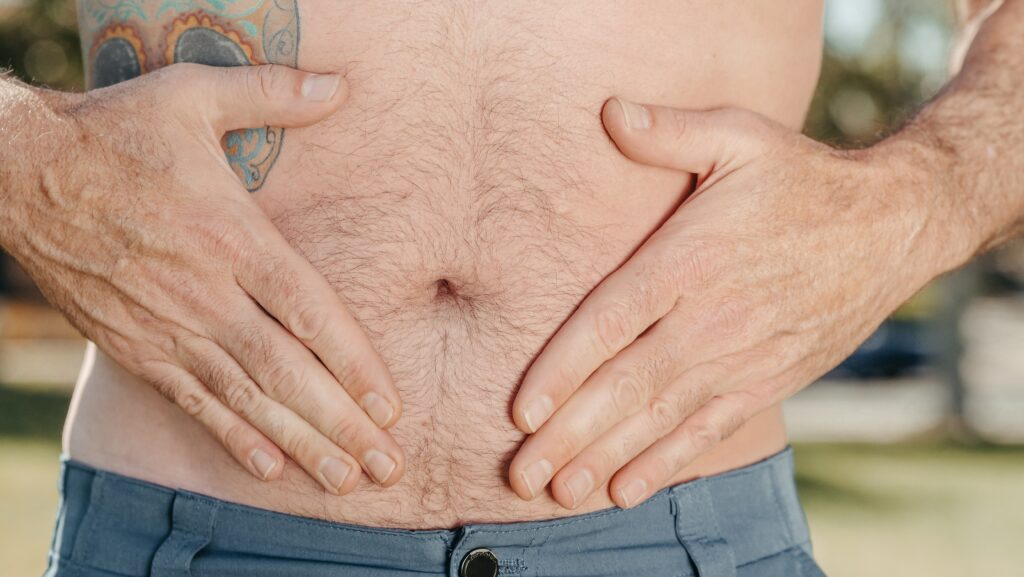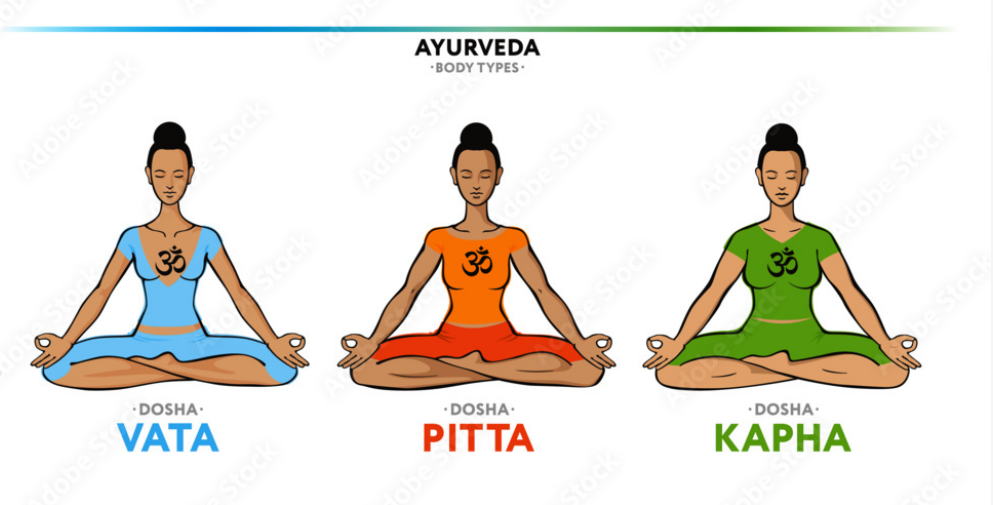Today I am going to talk about constipation and ayurvedic remedies. Many of my patients ask me for explanations and solutions to avoid this regular inconvenience that is encountered more in women and even more in autumn / winter.

I will explain why you have to worry about it and treat it. if not treated on time or if neglected, it may lead to a major problem.
You can easily get rid of constipation and integrate ayurvedic remedies into your lifestyle to treat and prevent it
I’m not going to review jathar Agni, the digestive fire again, you can find it in my podcast, but today I’m going to deal a little with this intestinal transit disorder of constipation.
What is constipation?
It is in fact the main disorder of the digestive system. In summary, for Ayurveda, if our elimination is correct, we are and remain healthy.
The colon contributes in major part to an adequate elimination. Either the elimination of waste from our food but also all the other wastes produced by the body to maintain its balance.
Proper functioning of the colon is distinguished by a tongue without persistent deposit (which does not return quickly after scratching it) and through easy and regular transit.
Your poop should be molded and floated.
Conventional medicine defines constipation as infrequent evacuation: less than 3 times per week.
Ayurveda states that we should have a bowel movement 1-2 times or even 3 times a day.
The real problem is, lack of bowel movements for a long period of time sends wrong signals to liver, brain, immune system etc, leading to migraine and such other complications (as explained below)
Causes of constipation
The main cause of constipation is your diet, especially foods having dry, light, rough qualities and also heavy to digest, although it can also be triggered by fever or infectious diseases.
Excessive consumption of pungent, astringent and salt foods can also be a cause
Other secondary factors are conducive to constipation:
- late awakening,
- hasty departure in the morning to work before which we “forget” to have a bowel movement,
- morning sexual activity,
- lack of physical exercise
- Less intake of water
- Working in strong sunlight, long walk, heavy travelling
- Sitting at a same place for a very long time
- Excessive use of antiacids
- Depression
- Rheumatoid arthritis
- And of course our famous mind. Psychological factors also produce constipation: stress, insomnia and fears in particular.
- Some medications, like diuretics, have side effects and cause constipation.
Complications :
If constipation is neglected for long, it can cause :
- Hemorrhoids,
- Fissure in ano,
- Gaseous distention of abdomen,
- bloating,
- hard stone like feces
- Headache,
- liver disorders and various metabolic as well as intestinal diseases may be originated.
- In few of the individuals back ache, reverse peristalsis can be also found
Constipation and ayurvedic remedies

In case of temporary constipation, spices will be of great help (ginger for example) because they normalize the functioning of the digestive fire.
Laxatives that tone the colon such as triphala and psyllium are also recommended.
Mild oleation
Internal oleation with 5 – 10 grams of ghee
External oleation – oil massage with sesame oil or Maha Narayana oil
For more serious and long constipation, it is castor oil that can be recommended but be careful its use should be done as a last resort. It can be used alongside ginger infusions to normalize digestion at different levels. Before to use castor oil, ask advice to your practionner. It is strong and for some conditions it is not adviced at all!
In cases of acute or severe constipation with very heavy tongue, fever and severe bloating, more powerful purgatives such as senna or rhubarb root are used.
There is then the probable presence of important toxins (Ama) in the digestive system and we must accompany these plants with a fast or a light diet for a few days to let our system eliminate the accumulated waste which is of course toxic over time. for us if they stay too long in our system.
Be careful, in case of pain in the lower right part of the abdomen, there may be appendicitis and these powerful purgatives are dangerous in this case.
Different type of constipation

Ayurveda recognizes different types of constipation depending on the dosha involved. This results in different states of tonicity of the colon: soft, intermediate and hard.
People who have a soft colon tend to have loose stools. In case of constipation, Isagbol (psyllium) or hot milk is usually sufficient. This condition is due to an elevated Pitta which dries up the stool due to its heat. It rarely becomes chronic.
An intermediate type colon is characteristic of Kapha. Stronger laxatives are then needed. For example, we may need to associate Triphala and Trikatu (especially if Ama is present). This condition is due to high Kapha which produces congestion of mucus which clogs the colon.
A hard colon characterizes Vata. Constipation is or becomes in this case often chronic and it is difficult to correct. Stronger laxatives, such as castor oil or sene, are needed at the start of treatment and over a short period, followed by milder, toning laxatives like Triphala over the long term. A strictly anti-Vata diet, lightest at first, should also be followed.
Follow ayurveda wisdom, treat naturally when it still time befor complication. Treat constipation with ayurvedic remedies
Chronic constipation must be treated.
Because it means that you store the wastes from food and your cells inside. It can lead to a variety of ailments, from the mildest to the most serious over time. It is necessary to correct this state. If the measures taken are not sufficient, then it is necessary to consult.
Correct elimination leads to a healthy body. The regeneration of our cells and organs operate favorably which supports all the functions of our metabolism.
The mind is also affected by this constipation.
When we are constipated, we feel that the lower abdomen is crowded, swells and occupies our mind. Our belly is not free and neither is our mind.
One does not go without the other and it is also for this, and studies have proven it, that our intestines call the second brain. A whole bunch of neurons connect them both.
I remind you and as a precaution, that castor oil and senna must be taken with a therapist or a doctor. These herbs are very powerful and their actions are not trivial in the body. Do not self-medicate with these two herbs.
In short, there is still so much to say but to conclude, listen to your body, do good by practicing simple but effective things for your health and your well-being.
These tips are very useful and you can use them right now without side effects.
Check and change your food
More vegetables
Many constipation and ayurvedic remedies can be done. In the event of chronic constipation, we will ensure that the food contains enough non-digestible vegetable fibers which will ‘scratch’ and sweep your intestinal mucosa walls and therefore clean it. (legumes, corn (bran), cauliflower, raisins, cabbage, berries, green leafy vegetables, celery, beans, guava, figs, flax seed, spinach, orange, mushroom…). And also use good fats like ghee, sesame or olive oil.
If the digestive fire is powerful, raw fruits and vegetables can be useful but beware, it’s always the same, it all depends on your constitution and the constipation you experience.
Grape and plum juices are recommended, apples and cranberries should be avoided.
Consumption of sesame oil is very good for treating constipation, consumption of olive oil is also effective. Just like ghee, which will have a therapeutic effect on our microbiota and promote the proper elimination of our waste.
More water
Drink good amounts of water throughout the day. With no constipation symptom, Ayurveda recommends to drink water only when thirsty. But in a disease condition, such as constipation, one can have good amounts of water. Water along with fiber rich diet softens bowels and prevents constipation.
Milk and dairy products: reduce your consumption
More exercices
Exercise: Do not sit at a place for a long period of time. Consider walking / jogging for at least 15 minutes in a day
Other tips
Do not hold the urge: As per Ayurveda, a natural urge is a signal to the person to act. It needs to be attended immediately. Regular holding of urge eventually will lead to constipation.
Generally speaking, it is best to get up at dawn, colon time (vata time). Take a large glass of lukewarm water which will have been charged with copper for at least 6 hours in its copper bottle.
Then, a little later, a glass of hot water or herbal tea upon awakening peristalsis, which can also be stimulated by some gentle yoga postures and a light massage of the lower abdomen.
The sitting position on the toilet is not physiological, it is advisable to have your knees raised to have a bowel movement, as by squatting on the toilet bowl for example or like the Turkish toilet which is in fact the ideal position to eliminate stool.
Then, if the evacuation has not yet occurred, one can have oatmeal hydrated in hot milk and ghee for breakfast. This constitutes a light laxative (fibers + fats). Note that cold foods, such as cold milk and cold cereals, block the evacuation.
Do not consume any drink or cold food during the winter this worsens Vata and therefore the internal and external dryness of the body.
Treat constipation with useful ayurvedic remedies
Hareetaki -Chebulic myrobalan-Terminalia chebula
Castor oil, before to use cator oil, ask your therapist, everybody cannot take it internally.
Recipies for constipation and ayurvedic remedies:
- Soak 10-15 raisins in water in the morning and consume it at night.
- 1 teaspoon of cow’s ghee should be dissolved in one cup (150ml) of warm water. In non- diabetic patients, 1 spoon of sugar candy can also be added (in non diabetic patients) and taken during bed time. This is highly effective against mild constipation.
- The fruit pulp of cassia fistula, known as golden shower or purging cassia, is taken (10grams) along with water or milk. This helps to relieve even chronic kind of constipation.
- Regular use of aloe vera pulp in diet prevents hard bowels.
Yoga asanas for constipation

- Uttana Padasana, (Raised Legs Pose)
- Ardha matsyendrasana (Half Spinal Twist)
- Pawanamuktasana (Wind Release Pose)
- Dhanurasana (Bow Pose)
- Vajrasana (diamond pose)
- Bujhangasana (cobra pose)
All asanas and exercises that put pressure on abdomen are very useful in the treatment.
If you want more info about yoga, i would love to see you in my 1:1 session to learn more about you and how to get a better health
Om Namah Shivaya
Julie
References:
Ayurvedic management of chronic constipation in Hirschsprung disease – A case study
AYURVEDIC UNDERSTANDING AND (CONSTIPATION)


























